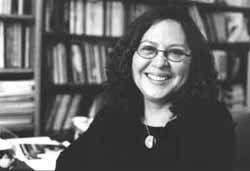Maria Torres-Guzman Assesses NYC Dual Language Programs
In 1999, the New York City Board of Education wanted to provide professional development to teachers in dual language programs. They approached Maria Torres-Guzman, Associate Professor of Bilingual Education at TC, to help their program coordinator.
"I proposed a survey to look at dual language programs," Torres-Guzman said. What schools were referring to as dual language, she said, was not what was recognized as a dual language model in the literature.
"There was another situation, which was that bilingual education was being reconsidered and the proposals that people were talking about was about dual language as well as sheltered English," she added.
Sheltered English, she explained is a program where the methodology of English as a Second Language (ESL) is contained within the regular class to introduce content. By using strategies employing concrete experiences and actions while speaking, teaching can be better understood even though the students are not familiar with the language.
In contrast, dual language has four characteristics, with a minimum of two criteria. The first is that language distribution between the majority and minority languages is 50/50. Second, there are English speakers and speakers of a language other than English in the class.
"The point is, you want language models for each one of the two groups," Torres-Guzman said. "You want cross-cultural understanding." That is the third criteria.
Fourth is that there is bi-literacy, not just bilingualism, which gives all the students the opportunity for academic achievement in both languages.
"Basically I said, if we are going to do this, we are going to look at the characteristics of the program, the enrollment of the students, what the policy is, the goals of the schools and whether that agrees with what the literature says," Torres-Guzman explained. "We wanted to also look at the new ways of teaching and issues of literacy."
After looking at these criteria in the New York public schools programs, they found six stable programs that could be considered dual language out of a total of 60 schools with such a program.
In assessing the six stable programs, Torres-Guzman looked at student characteristics, what model was used in dividing language usage and how prepared the teachers were to work in dual language programs.
In her assessment of the programs, Torres-Guzman reported that teachers needed additional staff development on understanding dual language programs better. She also noted that teachers in these programs needed to discuss various features of dual language instruction and to come to an agreement on how to do it. Third, Torres-Guzman found that teachers did not have a standard way of assessing student work.
As a result of this evaluation, she also provided districts with guidelines on providing staff development for the teachers in this program. Torres-Guzman prepared a booklet to answer questions parents might have about dual language programs based on her work with the parents in three of the stable dual language programs.
The next step is to compare these six stable programs with the other 54 schools with dual language programs. "One of the problems with bilingual programs has been the lack of clear language policies," she said. "When you are going to do it, do it and do it right."
Torres-Guzman would also like to study achievement of students in these programs. Children in these programs, both majority and minority language speakers, tend to do well academically she explained. "Understanding the issue of bilingualism-the issue of cognition and language-the metalinguistic flexibility that occurs and the intricate relationships of culture, language, and identity-give children opportunities for different ways of seeing the world."
Published Tuesday, Sep. 9, 2003
